Evoque drives Range Rover into future
By John Gilbert
What’s a sleek shape like you, doing with a name like Range Rover? That’s a fair question to ask of the 2012 Evoque, a departure that may prove the direction of Range Rover SUVs from now on.
Since 1948, Range Rover has solidly over-engineered SUVs before the nickname was invented, and all of them could conquer the most rugged off-road challenges. As years passed, they refined the Range Rover and Land Rover vehicles until they became the prestige cars of choice for customers who could afford to display their taste for unexcelled quality and versatility. Refinement never threatened Range Rover’s distinctive square shape at all four corners, however. Until now, that is.
A couple of years ago, the LRX, a Range Rover concept vehicle, Â hit auto shows with a startling new shape. Its chances to advance beyond concept stage seemed remote, but last year, the production Evoque became the newest auto show specimen, but it still seemed mostly fantasy. Suddenly, for 2012, the Range Rover Evoque has come to life and is on the road.
From the front, it bears a streamlined resemblance to the recognizable boxes of Range Rovers past. The rest of the body, however, leaves behind the boxy silhouette for a much sportier, sloped-back look. Its light and lean looks make sense, because it is the smallest and lightest Range Rover, with unique styling that stands out from all its siblings, and all other SUVs as well.
It performs as impressively as it looks, taking off with surprising swiftness. You can upshift through six gears by using steering wheel paddles, if you choose to manually override the 6-speed automatic transmission’s capabilities. It also cruises effortlessly at freeway speeds.
My test-drive Evoque was a 4-door in Indus Silver, wearing Prestige trim. The Evoque comes in an extra-sleek 2-door “coupe†design as well, which has an even sportier appearance, although the tapered roof of the test Evoque pretty effectively hides the fact it has four doors. Evoques come in Pure, Prestige, and Dynamic trim, with Pure being basic — but pretty fully loaded, while Prestige adds special 19-inch or available 20-inch wheels and tires and is filled with opulent creature comforts, and Dynamic is dressed for sporty use, with bolder interior schemes. Read more
GS 350 puts stealth Lexus on the street
By John Gilbert
LAS VEGAS, NEV. — On my first lap around the special cone-lined handling course Lexus had set up at Las Vegas Speedway, I powered the Lexus GS 350 through a 90-degree left turn when, facing a bit of a straight chute, something caused me to glance upward. A pair of sleek jet fighter planes, cruising in to land at the nearby Air Force base, glided across my line of vision.
I told the Lexus folks that was unnecessary inspiration. We were sufficiently fired up to drive the 2013 mid-luxury GS models hard enough around the handling course and the adjacent autocross, although I had to admit, watching those F-18 and Stealth fighter planes circling above pushed us to push this new sports-luxury sedan to its limits.
Anticipation for a Lexus introduction is often of technology in a softly comfortable car that is extremely competent, with strong engineering, but stressing luxury and amenities more than performance. The GS has been a Lexus holdout, however, always striving to be a European-like sedan that added sporty performance to Lexus, Toyota’s luxury division.
I suggested that Toyota had better watch its step. First, the compact Lexus IS-F is a blast to drive, and then, in the never-ending duel of base models on the Toyota side, the new 2012 Camry quietly goes past the Honda Accord in sportiness by firming things up and offering its 4-cylinder with a 6-speed automatic and steering-wheel paddles — two sporty features unavailable on the Accord. Now comes the new-for-2013, fourth-generation GS350, impressive in base form, spectacular in F-Sport, and futuristic with its GS450h hybrid alternative. This all could ruin that soft, luxurious image, which Lexus has developed. No chance of that, however, because the GS impressively improves its sporty performance and handling with numerous engineering and performance tactics, without overlooking any luxury concepts.
The GS remains basically a rear-drive sedan as if that alone assures sportiness, but Lexus covers all wheels, as well as bases, by offering optional all-wheel drive, and even all-wheel steering. In combination, all of that thrusts the GS 350 into valid competition with the mid-level German performance sedans, such as the BMW 5-Series, Mercedes E-Class, and Audi A6. And the F Sport version infringes on territory previously reserved for the M5, AMG, and S6 models of those German counterparts.
The standard GS 350 is well-equipped in basic form, with plenty of standard features, starting with 17-inch alloy wheels, 10-way power seats, and the creature comforts Lexus buyers expect, all wrapped in a new body with what Lexus says is the new “spindle†grille that will become a Lexus signature, on an altered platform that once held the Supra and the SC 430.
The car will reach showrooms in February, which is when prices will be divulged. It will come only with a 3.5-liter V6 engine, but it is plenty potent, kicking out 306 horsepower at 6,400 RPMs (red-line 6,600), and 277 foot-pounds of torque at 4,800. It places fuel injectors both in the combustion chamber and the air-fuel runners, giving it both direct and port injection, but it wants costlier 91-octane premium fuel.
The major variations of the GS 350 are to pick the Premium package, which adds 18-inch wheels, rain-sensing wipers, heated and ventilated front seats, and a power rear sunshade. The Luxury package — remember, “Luxury†ranks above “Premium†in Lexus lexicon, which we can call Lexus-con — will get you everything on the Premium list, plus adaptive suspension, adaptive headlights, 18-way power seats, and rear heat-air controls.
The F Sport, with its available 19-inch wheels, with 235/40 front and 265/35 rear tires, uses the same V6 power, with standard four-wheel steering. But it looks meaner, with a mesh grille and retuned suspension with firmer springs, variable dampers, thicker stabilizer bars, variable gear ratios, altered bushings on the shock components, and bigger and stronger front brakes, and stark interior features, with 16-way power seats. Read more
CR-V renews duel with Escape at LA show
By John Gilbert
LOS ANGELES, CALIF. — The earthquake and ensuing tsunami that struck Japan in March of 2011 affected the supply of parts enough to set back production of Japanese automakers all around the world. For Honda, the resulting shortage of the Honda CR-V compact crossover helped Ford Escape sales shoot by and supplant the CR-V as the top-selling SUV in the U.S.
If the Escape and CR-V are going to duel for supremacy in 2012, they will be doing it with entirely new vehicles — unveiled to the public for the first time at the Los Angeles Auto Show. Other indications from the same show, which runs through Thanksgiving Weekend, are that the new Escape and CR-V will have plenty of competition.
Much like golf and tennis, the auto show circuit in the United States also has its four “majors,†which stand above the numerous regional shows to compete with each other, and the Los Angeles Auto Show kicks off the new season, to be followed by the Detroit Auto Show in early January, the Chicago Auto Show in February, and the New York Auto Show, which comes in April.
Since moving its date to November, the L.A. show has gained prestige, and last year may have become the most significant, with the domestic Big Three all moving some of their biggest introductions from Detroit to L.A. The Chevrolet Volt, Ford EcoBoost models, and Chrysler’s resurgent redesigns under Fiat tutelage all jumped to join the previously import-dominated Los Angeles show.
With only a few key vehicles, such as the Ford Fusion and Chevrolet Malibu, being held off for Detroit, this year’s Los Angeles show stakes its importance on another strong array of new products, led by the Escape, the CR-V, and other compact crossover SUVs such as the Mazda CX-5, plus production versions of the Range Rover Evoque, and Mercedes ML320.
The CR-V became available to the automotive media a month earlier than the show, but Honda restricted reports on the new vehicle until its official introduction, which came at the L.A. Show. The new CR-V has totally new design in its fourth generation.
The first CR-V was a 1997 model, and was an interesting attempt at making an all-wheel-drive compact utility vehicle. It sold well, competing with the Toyota RAV4 in popularity, and its first renewal came for 2002 when its shape was refined and less boxy. The third generation came in 2007, and closely followed the RAV4’s new model, which was lengthened by more than a foot and added a third-row seat and a V6 engine option. Honda stuck by its more-compact design, with two rows of seats and only a strong 4-cylinder, and it left critics — as well as the RAV4 — behind in sales by taking over the No. 1 slot.
That third-generation model was a considerable change in appearance, with something like a half-circle silhouette rising from the windshield and tapering off to the rear deck. It continued to demonstrate a combination of size, performance and versatile packaging, coupled with with a high standard of initial build quality to remain No. 1 in sales through 2010.
Akio Tonomura, CR-V project leader for Honda, said the vehicle has matured from its first “comfortable runabout†stature through the more-recent casual-formal model that sold 4.9 million in 160 countries. Competition has increased, with impressive new compact crossovers that include the Hyundai Tucson and Kia Rio from Korea, the Nissan Rogue, as well as the RAV4 and the Escape, which grew from an original design for the Mazda Tribute. Changing lifestyles and the economic slump and environmental problems have affected the marketplace.
“But the wants of consumers are unchanged,†said Tonomura. “The fourth generation CR-V improves on being efficient, functional and confident, fused together through synergy. It has the comfort of a passenger car, the versatility of a minivan, and the confidence of an SUV. Only the CR-V can top the CR-V.†Read more
Chevy hopes for ‘super’ from 2012 Sonic
By John Gilbert
The 2012 Chevrolet Sonic was introduced just in time for the SEMA electronics extravaganza in early November, 2011, in Las Vegas, which barely gave  Chevrolet time to come out with a specialty model called the “Sonic Boom†for the SEMA show. We can only imagine how long it will take until Chevy PR wizards come up with a “Super Sonic.â€
The normal, garden-variety Sonic is stuck with designations such as LS, LT, and LTZ, but it is intriguing, with sporty looks in either hatchback or sedan designs, and it is sprightly, bordering on sporty, in its performance — at least with the turbocharged choice of engines. It’s important to appreciate the basic Sonic, on its own, of course, and living for a week with the high-end LTZ version, with its turbocharged engine and 6-speed manual transmission, is a good way to study the car.
The Sonic is of vital importance to Chevrolet as it leads General Motors back from the shadows of bankruptcy, and it jumps into the highly competitive subcompact segment, where a herd of vehicles — from the Ford Fiesta to the Honda Fit, Nissan Versa, Mazda2, Toyota Yaris, a couple of Scion models, and the pair of Korean trend-setters , the Hyundai Accent and Kia Rio.
That’s an imposing group to try to invade, with all or most of them offering the latest technology, good performance, high gas mileage, and low basic price. And nobody has heard any of those manufacturers say anything other than that their cars offer the interior amenities of a much more expensive car, because the buyers stampeding to the subcompact segment don’t want a stripped-down econobox any more; they want a small, economical car with a lot of creature features.
Korea is one of the key players in the subcompact surge, because it has made enormous strides in the last decade, but the Hyundai-Kia partnership really caught fire in just the last couple of years. There used to be a half-dozen Korean car companies 20 years ago, in the youthful days of that country’s brief auto history, but one by one they fell by the economic wayside, while Hyundai flourished. Daewoo was among the casualties, and Kia was headed that direction, but as Hyundai took over Kia, General Motors bought out Daewoo, so both remained viable. The new, slick-designed Kia models get to share the high-tech Hyundai drivetrains. And if you bought a Chevrolet Aveo in the last couple of years, you were buying the latest installment of a Daewoo.
The Sonic, then, is the new-for-2012 descendent of the Aveo, but it is much more than that. A Chevrolet official told me that the some of the engineering ideas came from Europe (think Opel), and some of the design came from Asia, while the car itself is assembled in the U.S., at the Lake Orion, Michigan, assembly plant. Its sticker says that U.S./Canadian parts make up 47 percent of Sonic’s content, while Korea offers 20 percent as the major source of foreign parts. Makes you wonder about the remaining 33 percent, but it obviously comes from Europe, or possibly from biodegradable Aveos. At any rate, Chevrolet is justified in calling it a “global†car.
The basic cheapness and uncoordinated feel that plagued the Aveo is nowhere evident in the Sonic. Chevrolet PR claims that it is the only subcompact made in America, which is impressive, even if it sounds odd coming a couple paragraphs after the boasts of it being such a global car. It will be sold all around the world, and its transmission is built in Austria, but it’s good to see GM choosing a U.S. plant as its base.
The engines are built in the U.S., and the Sonic gets its push from the same engines that power the Cruze, Chevy’s highly successful car one step larger, in the compact class. The Cruze is selling very well, even if almost one-third of them are being sold to fleets, and its power is best described as adequate with the 1.8-liter 4-cylinder, or the smaller but turbocharged 1.4-liter 4. The 1.4, without the turbo, is the gas engine used in the plug-in electric Volt, as well.
In the smaller and lighter (2,721 pounds for the sedan, 2,684 for the 5-door hatchback) Sonic, the 1.8 ranges on the high side of displacement, and puts out 138 horsepower and 125 foot-pounds of torque. The smaller 1.4, with its fuel-air mix thrust into it by turbocharging, delivers 138 horsepower and 148 foot-pounds of torque. If it seems odd to offer two engines with identical horsepower, it won’t seem so odd after you drive them both. Read more
2012 Beetle adds athletic style to ‘cute’
By John Gilbert
Model renovations occur every four or five years throughout the auto industry, but not at Volkswagen. When the German company says its 2012 Beetle is “all-new,†don’t dismiss it as routine — it is only the second renovation in the car’s 74-year lifetime.
The first VW was produced in 1938, and was called “Volkswagen,†or the “people’s car.†By 1949, it was brought into the U.S., where people were charmed by the novelty of such a small and economic car, with its rounded-roofline, which resembled a beetle, so they started calling it the “Beetle,†with “Bug†as its nickname. Just as well, because the expanding company itself by then was known as Volkswagen. The Beetle’s familiar shape continued south of the border, until 2003, when the last one was produced in its Mexican plant.
Meanwhile, in 1998, Volkswagen decided to resurrect its icon, replacing the rear-drive car with a larger, retro-modern front-wheel-drive second generation. It was called the “New Beetle,†to recall its predecessor but also put distance between the two.
Together, Beetles and New Beetles sold over 21.5-million worldwide, with over half of annual sales in the U.S. Owners all agreed they were steady, dependable, economical, user-friendly, and charmingly cute. But the word performance was never be used to describe those Beetles.
It doesn’t take long behind the wheel of the 2012 Beetle to realize the assessment must change from “cute little car†to “cute little car; goes like hell.â€
It’s not a street racer, but its quick responses are closer to a sports coupe than a car with such familiar charm.
The new generation car sheds the “New†and again is called “Beetle,†and it rides on a new platform with a wider and lower stance and firmer suspension. It is stretched 6 inches, to 168.4 inches, on a 99.9-inch wheelbase; it is 71.2 inches wide, 3.3-inches more; and it stands 58.5 inches tall, a half-inch lower than the New Beetle.
Its updated engines include the surprisingly strong 2.5-liter 5-cylinder, and the hot, 200-horsepower 2.0-liter 4-cylinder turbo — of Golf and GTI prominence.
It’s not GTI-hot, but it performs with enough spirit to give you pleasure whenever you drive it, and an extra kick whenever you find the need to push it a little. Or a lot. I enjoyed the feel of the bright red test vehicle, but I hadn’t pushed it hard, until one night when I was driving through Minneapolis on Interstate 94 at about 11 p.m. A rude and aggressive driver in a large Tahoe SUV had come up behind a row of cars in the left lane, closing to within 10 feet of each and flashing its lights urgently, virtually forcing them to pull over.
I moved into the far right lane because I was nearing the exit onto westbound 394, satisfied that I had gotten clear of that bozo in the process. The serpentine-like exit ramp bends gently up and to the right, then makes a hard, sweeping left, before a more gradual right blends into 394. I caught a glimpse of the big SUV, speeding up the left, then veering into the middle lane. I wanted no part of being cut off or run off the road, so I gave the Beetle a dose of gas and accelerated. As if on cue, the Tahoe cut in behind me, surging right up onto my tailpipes as we started up the exit. Annoyed, and seeking refuge, I downshifted and hammered the gas pedal. The Beetle surprised me, zipping up the ramp to the right, and staying flat enough that I could keep accelerating around the hard left curve. It held its flat attitude as I powered through the esses, and when I glanced in the rear-view mirror, there was no Tahoe for several seconds.
Finally, its headlights appeared, a half-block back. About a mile later, I was cruising at the speed limit in the right lane when the Tahoe roared past in the left lane, going about 75 or 80. Last call, or Big Mama’s curfew, must have been urgently calling, but I got a chuckle at the incongruity of that big, V8-powered SUV being unable to stay with the cute, little Beetle around a series of curves. Read more


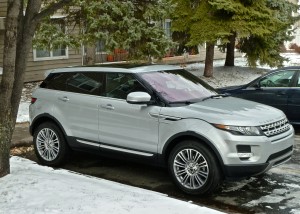

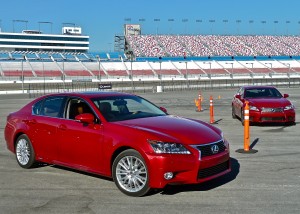
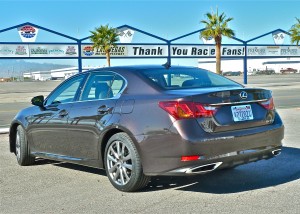
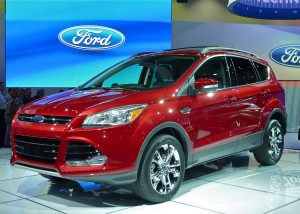
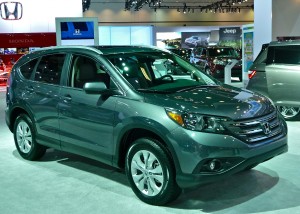
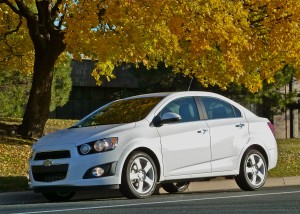
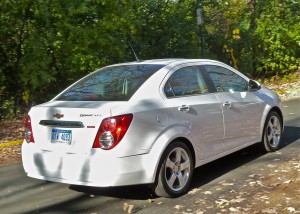
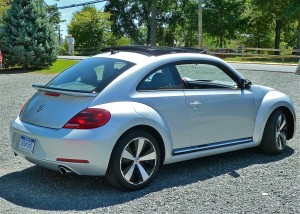
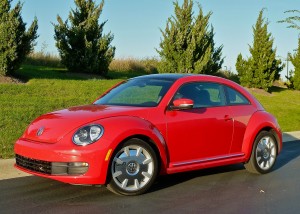
 John Gilbert is a lifetime Minnesotan and career journalist, specializing in cars and sports during and since spending 30 years at the Minneapolis Tribune, now the Star Tribune. More recently, he has continued translating the high-tech world of autos and sharing his passionate insights as a freelance writer/photographer/broadcaster. A member of the prestigious North American Car and Truck of the Year jury since 1993. John can be heard Monday-Friday from 9-11am on 610 KDAL(www.kdal610.com) on the "John Gilbert Show," and writes a column in the Duluth Reader.
John Gilbert is a lifetime Minnesotan and career journalist, specializing in cars and sports during and since spending 30 years at the Minneapolis Tribune, now the Star Tribune. More recently, he has continued translating the high-tech world of autos and sharing his passionate insights as a freelance writer/photographer/broadcaster. A member of the prestigious North American Car and Truck of the Year jury since 1993. John can be heard Monday-Friday from 9-11am on 610 KDAL(www.kdal610.com) on the "John Gilbert Show," and writes a column in the Duluth Reader.